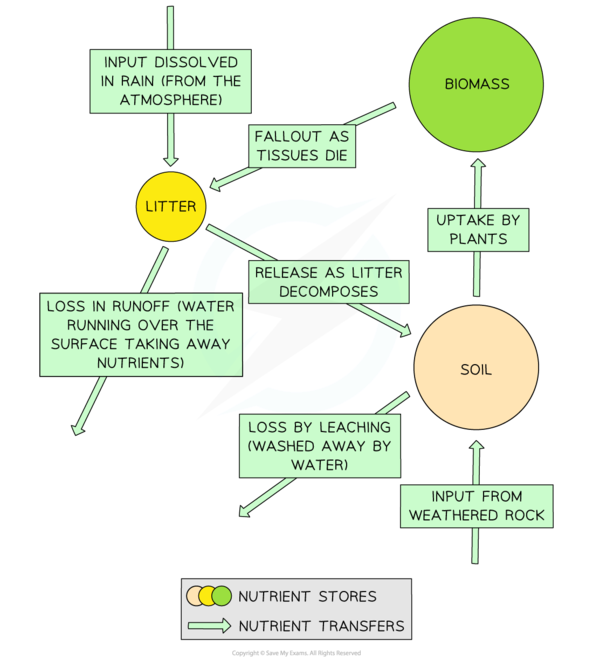Interrelationships of Ecosystems
What is an ecosystem?
- An ecosystem is the living (biotic) and non-living (abiotic) components of an ecosystem
- Ecosystems vary in size and scale
- A small ecosystem could be a garden pond
- A large-scale ecosystem could be all tropical rainforests - this is known as a biome
- Biodiversity refers to the variety of plant and animal species within an ecosystem
- The level of biodiversity depends on the climate, available habitats and food sources
What is interdependence?
- Within an ecosystem, the different biotic components depend on each other, and the abiotic components for survival (food, water and shelter)
- This is known as interdependence
- It means that changes in one component can have significant impacts on other parts of the ecosystem
- One of the main interactions between biotic components is feeding
- These interactions can be shown as food chains and food webs
Food webs and chains
- Within all food chains and food webs there are examples of:
- Producers: Food chains always start with a producer
- Primary consumers: Producers are eaten by primary consumers (herbivores/omnivores)
- Secondary consumer: Primary consumers are eaten by secondary consumers (carnivores/omnivores)
- Tertiary consumer: Secondary consumers are eaten by tertiary consumers (carnivores/omnivores)
- There are also decomposers.
- These are fungi and bacteria, and they:
- Help to return energy/nutrients back to the soil
- Break down dead organic matter plant/animal waste
- Release energy from organic matter so it can be recycled
Food chains
- A food chain shows the feeding interactions and transfer of energy from one organism to the next
- The source of energy in a food chain is light energy from the sun

An example of a food chain
Food webs
- The links between the biotic components can also be shown as a food web
- These show the complex variety of plants and animals which feed on each other

A food web shows the interdependence of organisms
- For example, in the food web above, if the population of caterpillars decreased:
- The population of grass plants would increase as there are now fewer species feeding off them
- The populations of sparrows would decrease significantly as earthworms are their only food source
- The population of hawks would decrease slightly as they eat sparrows but also have another food source to rely on (mice and frogs)
Worked example
State one role of decomposers in an ecosystem.
[1 mark]
Answer:
- Decomposers help to return nutrients/energy to the soil [1]
- They break down dead plants and animals/organic waste or excreted material [1]
- They release energy from a plant or animal so that it can be recycled [1]





